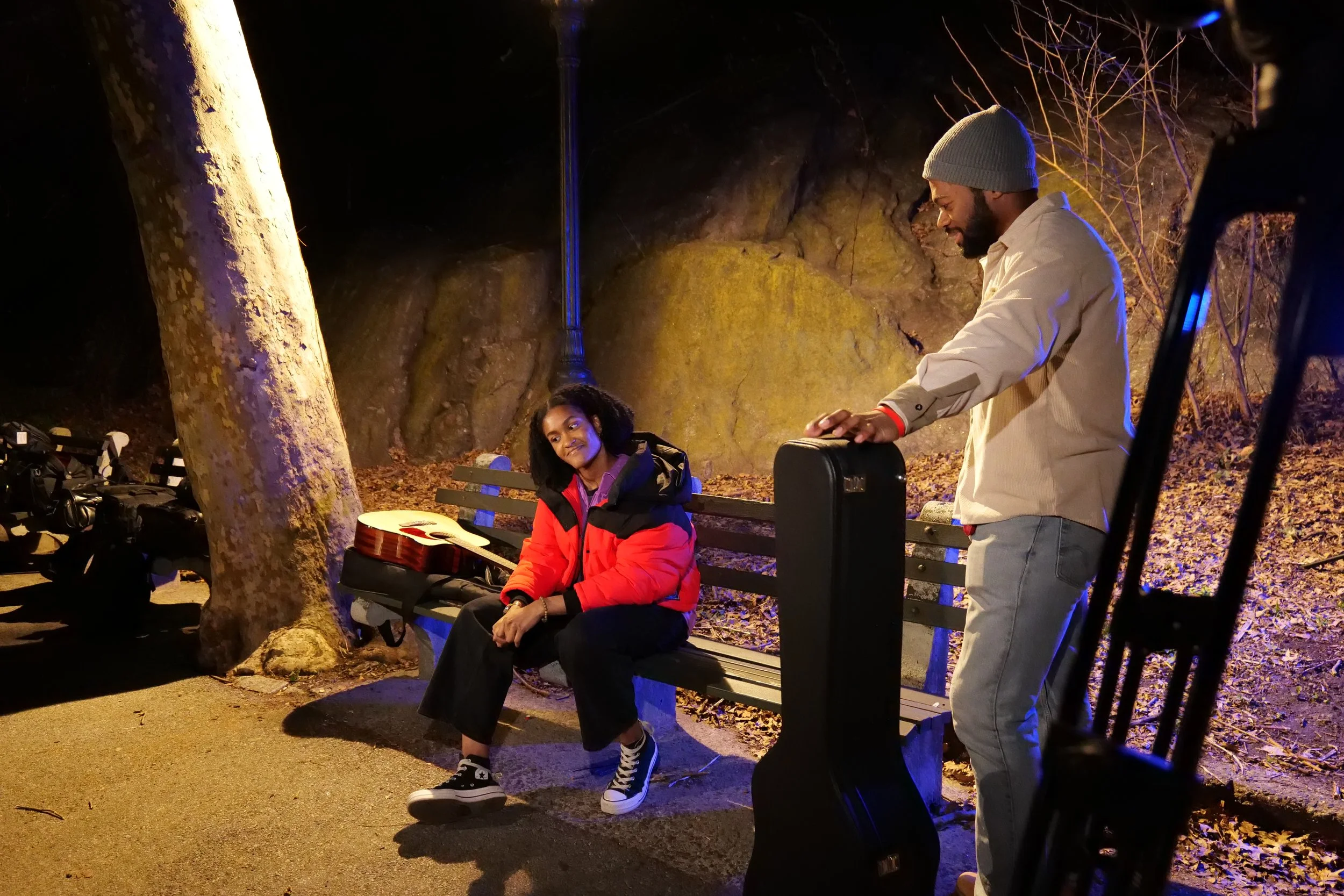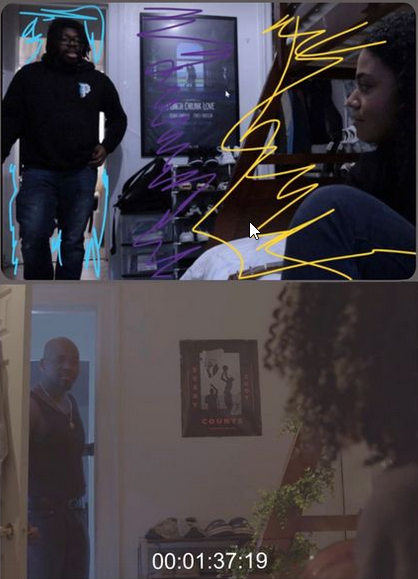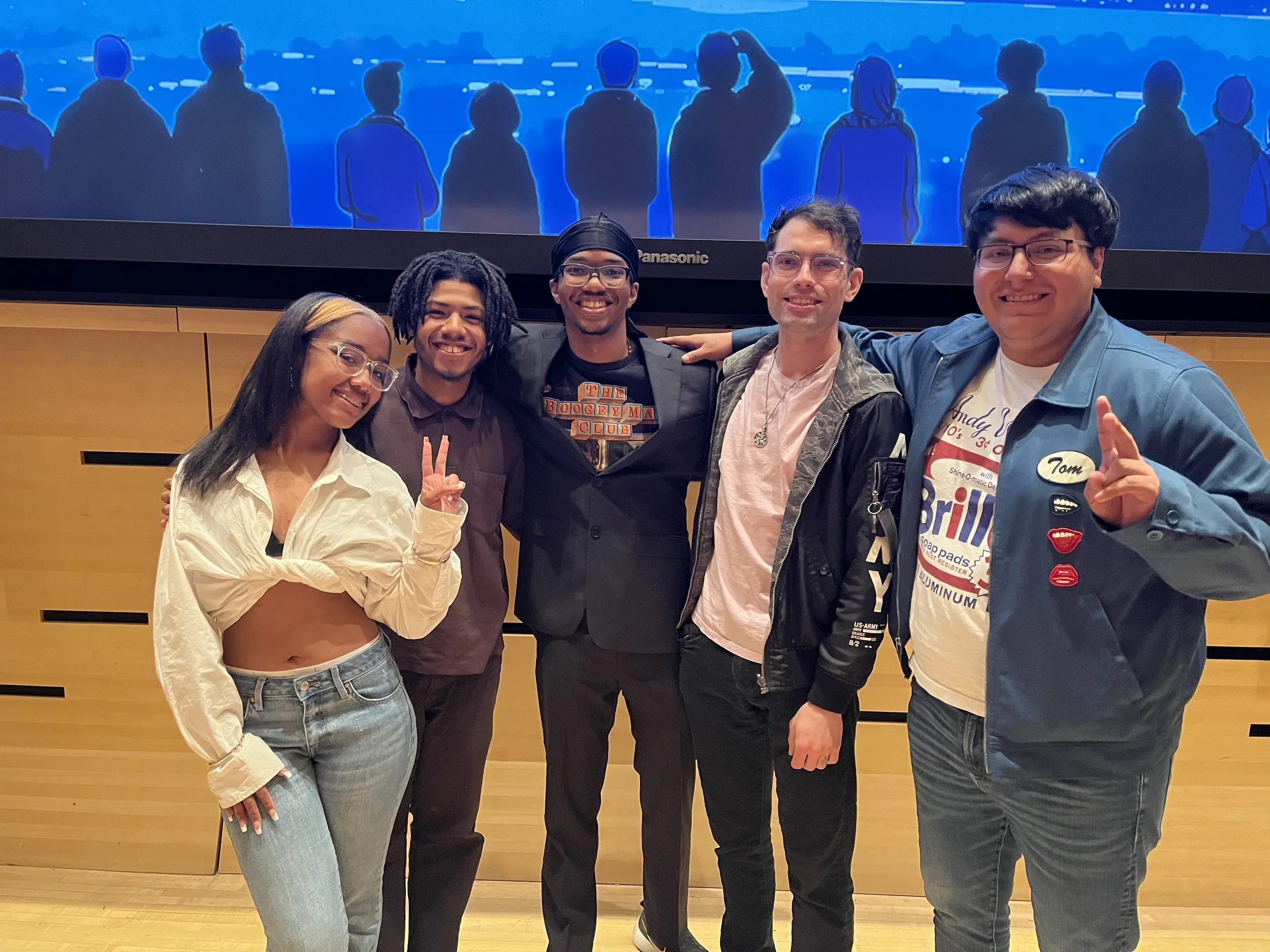SALVATION (2023)
Amidst the shadows of a cruel uncle, singer Connie Freeman's resolve is tested until a chance encounter with a street musician rekindles her spirit, reminding her to chase her dreams against any and all odds. Watch the film, then read up on it’s creation with the article below!

Watch Hilton Goode’s BFA Thesis Film Salvation for a limited time here!
CAST
Jordan White - Connie
Didier Elysee - Markus
Hunter Bradford - Ian
Nyeem Greenwood - Taje
Nicole De-Leon - Herself
Jared Ortes - Extra
CREW
Byron Martinez - Gaffer & Grip
Bryce Cristiano - Sound Recordist
Pamela Ozcariz - Cinematographer
Ruben Plaza - 2nd Assitant Director
Ruben Plaza - 1st Assistant Director
Shania Brown - Producer
Written & Directed by Hilton Goode

SALVATION - A SHORT FILM BY HILTON GOODE (DIRECTOR COMMENTARY TRACK)
Recorded January 23rd, 2024
THE CREATION OF SALVATION
Read up on how Goode came to the idea of Salvation, his experience working with several different artists and more chronology the journey of his thesis film that won him best fiction directing at is school’s final reel city 2023 presentation.
The Original Idea
“Salvation” traces its origins back to an early project titled “The Musician”. One of Goode's most cherished narratives is Naughty Dog's "THE LAST OF US." The announcement of the sequel, marked by a teaser trailer featuring protagonist Ellie playing her guitar, holds a special place in his heart. This moment, witnessing the dawn of a sequel to a story deeply meaningful to him, is a pivotal memory for Goode. The essence of this trailer sparked the initial inspiration for the character of Connie. The portrayal of Ellie, engrossed in her guitar amidst a backdrop of desolation and chaos in a zombie apocalypse, captivated Goode. The idea of finding solace and a form of escape through music in such bleak circumstances was a concept he found profoundly intriguing.
With the basis of a story about a lead with a guitar in his head, Hilton of course needed a name for the character. He liked the name Connie and had recently watched Quinton Taretino’s Jango Unchained, where Jango takes on the surname Freeman, therefore Goode named the lead “Connie Freeman”. In the initial narrative, the Musician diverged from the typical portrayal of a passionate guitarist playing on the streets for fun. Instead, he assumed the role of a homeless individual, a concept reminiscent of Goode's debut film, 'Men are Still Good.' In this early version, Connie was portrayed as a struggling YouTuber aiming for stardom, grappling with a specific guitar piece. The Musician, encountered one night on the street, offered guidance, emphasizing the correct approach. The story culminated with Connie achieving fame and securing a record deal, though the results were less than satisfactory.
Notably, many fundamental elements from 'The Musician' found their way into 'Salvation,' albeit in more nuanced and audience-engaging ways. Connie's journey became more introspective than overtly literal. She continued to grapple with a challenging musical piece in the final rendition, but the obstacle shifted from a technical challenge to a test of her confidence and initiative. Furthermore, the character of Connie's younger brother, Ian, was absent in the original version. Goode initially intended to film this early iteration with friends before enrolling in film school, but the project remained unrealized. However, the concept lingered in Goode's mind for years, eventually becoming the basis for his thesis project.
Pitching the Film During Finals
Originally, Goode did not envision 'The Musician,' which would eventually evolve into 'Salvation,' as his thesis film. His initial plan was to create a horror film, much in the style of 'Follower,' revolving around a therapist’s descent into madness while trying to assist his clients. This story, named "Hi Doctor," had its beginnings as a final project in a Psychology class at CCNY. However, when Goode pitched this idea, several of his professors, including screenplay writing instructor Annie Howell, expressed concerns about its overly ambitious nature, citing its inclusion of intense elements like blood, violence, and firearms. Faced with disappointment, as Goode was deeply invested in this concept, the project remained unrealized.
Subsequently, Goode conceived another idea involving a young couple, with the male partner being a musician. Yet, this remained more of a vague concept than a fully fleshed-out story, leading to increasing frustration as the deadline for his thesis neared. In search of inspiration, Goode revisited several of his earlier screenplays, among which 'The Musician' stood out. He found a personal connection with the protagonist Connie's experiences – an aspiring artist grappling with self-doubt in their abilities. Believing that with some adjustments, the story could resonate with a global audience, Goode set about refining the narrative, marking the genesis of what would become the story of Connie Freeman
During the initial stages of planning, Goode developed a visual storyboard, employing stand-ins to represent various characters. This process allowed him to validate the feasibility of his vision within the intended filming locations. From the outset, Goode was conscious of the significant role color would play in the film. He meticulously preplanned the placement of blue and yellow hues, ensuring these colors carried thematic significance throughout the production.
TOP IMAGE - Visual Storyboard, Nicole De-Leon & Brennon Quinones
BOTTOM IMAGE - LOG Final Photography
Jordan White auditioning for Connie Freeman
Didier Elysee auditioning for Markus
PRE-PRODUCTION: Casting and Getting the Crew Together
Fully aware that 'Salvation' would be his most significant directorial endeavor to date, Goode was determined to assemble an exceptional crew. He understood that having the right team would not only ease the production process but also elevate the film's quality. Goode chose Shania Brown, a friend from CCNY, as his producer, confident in her shared passion for the film's narrative and her ability to adeptly manage scheduling and auxiliary aspects, allowing him to concentrate on the creative facets.
For the role of Assistant Director, Goode knew Ruben Plaza was the ideal candidate. Having previously worked as the cinematographer for Plaza's thesis film, their relationship had strengthened during that project. Plaza would constantly ask Goode how Connie was doing in classes and during mutual exchanges, never seizing to show passion about the project.
Casting posed a considerable challenge, especially for the role of Connie, which required a unique combination of acting, singing, and guitar-playing skills. After thorough auditions, Jordan White was chosen for her outstanding embodiment of Connie Freeman's fundamental characteristics. Didier Elysee was cast as Uncle Markus, capturing the essence of the character's raw intensity. Nyeem Greenwood, a fellow CCNY film student Goode met during an equipment return, was selected for the role of Taje. The casting of Connie's younger brother Ian had its own story, which would be addressed later.
With the cast in place, the crew needed final touches. Brown brought in filmmaker Nya Archive for set and costume design. Goode enlisted Byron Martinez, a talented gaffer with whom he had collaborated on previous projects, and chose Bryce Cristiano on sound and Pamela Ozcariz a fellow CCNY Film Master’s student for Cinematographer solidifying the team.
However, on the eve of filming, a crisis emerged when the original actor for Ian unexpectedly dropped out, sending Goode and Brown into a frantic search for a replacement. In a fortunate turn of events, their film professor Felicia Harden volunteered her son, Hunter Bradford, for the role, ensuring that production could proceed as planned.
PRODUCTION: Rolling on Salvation
The initial two days of principal photography for Goode's project involved interior scenes set in the Freeman household. The team commenced with Scene 2, featuring Connie and Ian. Hunter, playing Ian, exhibited a natural chemistry with Jordan, enhancing the scene's authenticity. However, on the second day, a scheduling challenge arose when Hunter had to leave early, leading to an unconventional approach in filming his scenes. This involved capturing Hunter's parts when available and shooting the rest in his absence. A notable instance of this was in the scene where Markus confronts Connie; Ian appears at the start and end, but Hunter was not present for the individual coverage of Connie and Markus. This situation presented a unique challenge for Goode, who had to strategically think like an editor, considering how to maintain the illusion of Ian's constant presence.
In the second week, the focus shifted to exterior scenes and the rapid completion of the work-study sequences in the Humanities and the Arts guidance room, a location for which Goode was particularly grateful to have access. A continuity issue arose during the first park scene regarding Connie's green bag, necessitating a quick retrieval by a production assistant. Despite the stress, the situation was resolved effectively.
Throughout the filming, Goode experienced significant stress, especially when reviewing the footage and realizing certain key moments were missed. This oversight was particularly evident in the transition to Connie's entry into the argument between Ian and Markus. In the rush to film Hunter's scenes, some details were overlooked. Consequently, Brown arranged for two additional days of reshoots. The first day focused on re-filming the opening scene where Connie sings "RENNE" on her guitar, as Goode was dissatisfied with the original shot composition and sought to emulate the style of The Last of Us Part 2's teaser trailer. Jeremy Cuevas, known for his intimate understanding of camera movement, took charge of the camera for this reshoot. With production finally wrapped up, Goode was set to begin the editing process.
POST PRODUCTION: EDITING - MUSIC - ADR
Hilton approached the editing process with confidence, leveraging his proficiency in Adobe Premiere Pro. His primary focus was on syncing the footage and selecting the best takes, with a keen eye on maintaining the film's illusion. The initial assembly cut stretched over four hours, but as he continued refining the edit, his sense of accomplishment grew.
Nearing the conclusion of the editing phase, Goode identified the scenes requiring ADR, particularly certain outdoor sequences in the park and Jordan’s guitar performance, which needed redoing for consistent sound due to varied shot selection.
For the film's score, Hilton collaborated with John Paul Canal, a Musical Composer he met during his internship at KATCH. This was Hilton’s first experience directing a composer, a task that proved challenging due to his unfamiliarity with this specific role. Canal prompted Hilton with filling out a beat board so he knew where Hilton wanted certain motifs for characters. Hilton and Canal conducted a detailed Zoom meeting to discuss the desired mood for each scene. Throughout the editing process, Hilton sent Canal various cuts to allow for precise retiming of the score. Canal's meticulousness and desire for perfection in his scoring were highly appreciated by Goode.
Once the editing was complete, Goode prepared to present the film to his professors. There was an impending deadline for submissions to be considered for awards at CCNY’s annual REEL CITY Festival, where all thesis films are showcased in a theater setting to an audience of family, friends, and peers. Goode managed to apply the final touches in time to submit the film for award consideration at the festival.
SALVATION’S FIRST SCREENING & WINNING BEST FICTION DIRECTING
Goode was thrilled at the prospect of screening a film he had directed to a live audience for the first time. He relished the opportunity to share his work in a theatrical setting, an experience he likened to a spiritual journey. The audience's response was heartening, with laughter at Hunter's portrayal of Ian and applause during Connie's musical performance. This engagement culminated in Goode receiving the award for Best Fiction Directing, a recognition he views as a significant milestone at the onset of his filmmaking career. He expresses immense gratitude towards his talented crew and eagerly anticipates future collaborations and the creation of more films.
From Left to Right Shania Brown, Jeremy Cuevas, Hilton Goode, Bryce Cristiano, Ruben Plaza
Hilton recieving his best fiction directing award from his film production professor Felicia Harden.








